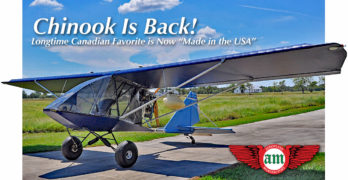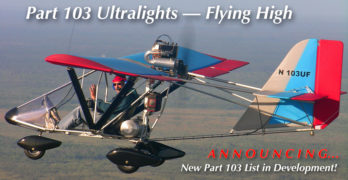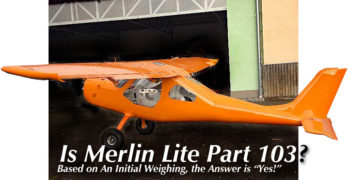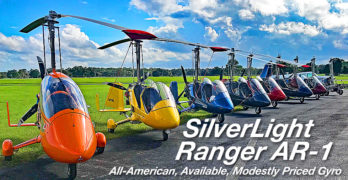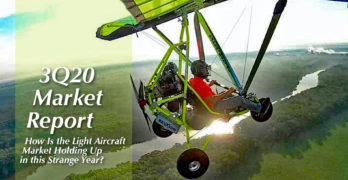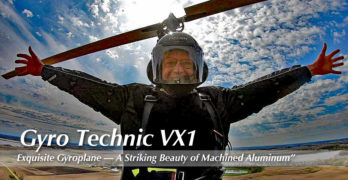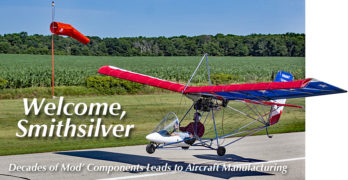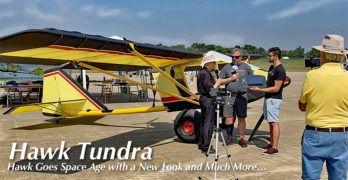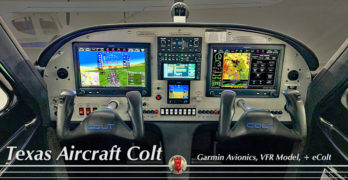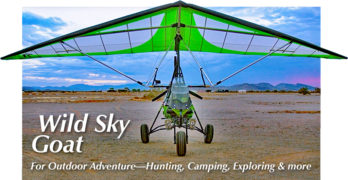Then…
In the 1990s, a pair of Canadian aircraft dominated the light aviation market in America’s neighbor to the north. The two planes are known to many Americans: Beaver and Chinook.
Thanks to a rescue by second owner ASAP many years ago, both continued to be manufactured in Canada’s West.
Long-departed Birdman Enterprises did a fine job of originating the Chinook. When ASAP took over, Canadians and ultralight enthusiasts in many places celebrated ongoing support of this aircraft. Hundreds of Chinooks were built.
That is now rather distant history. Bringing Chinook not only into the present day but also into the USA is the Aeroplane Manufactory.
…and Now
For several years, ASAP sold the Chinook Plus 2, tagging the two-seater model with the “Plus” suffix after ASAP’s team improved and refined the aircraft following their acquisition.
In more modern times, after purchasing the Chinook design rights and inventory in 2013 (five semi loads’ worth!), Aeroplane Manufactory brought the north-of-the-border design way down south to the Houston, Texas area.
Search Results for : Flight Design
Not finding exactly what you expected? Try our advanced search option.
Select a manufacturer to go straight to all our content about that manufacturer.
Select an aircraft model to go straight to all our content about that model.
How To Account for Growing Part 103 Ultralight Sales? Here’s My Plan (But Please Help!)
Pilots around the world are aware of Part 103 Ultralights but many have a blurry view of the industry that produces these aircraft. Most are unaware how well this often-overlooked segment is doing in recent years, even during Covid 2020.
FAA refers to these lightweight flying machines as “ultralight vehicles,” a term that creative rulewriters adopted in the early 1980s to avoid heavy regulations typical for “aircraft.” This wording helped the young industry grow and develop. It worked so well the regulation has not been altered for decades.
Even ultralight enthusiasts in America and other countries may not be fully aware how popular ultralights have become in recent years. When Light-Sport Aircraft came on the scene in 2004 they knocked out the ultralight two-seater training fleet. Many believe ultralights never recovered.
How wrong they were, yet who can blame them because no one truly knows how many ultralights are being built and sold these days.
Weighing and Flying Aeromarine-LSA’s Part 103 Merlin Lite — Does It Make Weight?
The most popular article of this crazy year — when people have been visiting in record numbers — was about Aeromarine-LSA‘s Merlin Lite. Tens of thousands of you devoured this article within days of it being posted.
The word sensational is vastly overused in modern American society but in this case the word fits the intense interest in Merlin Lite. For the back story, see the article in this link.
Despite obvious enthusiasm for this new Part 103 entry, many of you were skeptical. No wonder. An all-metal, fully enclosed aircraft does not closely resemble many of the other Part 103 aircraft that are selling briskly over the last few years. If you were among the doubters this post — and the video below — may serve to allay one of your concerns.
Weighing Merlin Lite
Developer Chip Erwin came to 2020’s Midwest LSA Expo prepared to tackle the hesitation in pilot’s acceptance of Merlin Lite as a legitimate Part 103.
SilverLight Shines Brightly Among Modern Gyroplanes — All American, Available, and Modestly Priced
After thousands of articles, I’ve have heard over and over about two common ingredients sought by pilots who visit this website: Affordability and Availability. Once you make a decision about what to buy, you want to be able to get it quickly and you want it to fit your budget.
The first requirement is understandable. It’s all fine and good to wish you could buy something but if it’s way out of your price range or if you simply cannot commit to a large purchase right now, it isn’t likely to happen… and after all, who doesn’t love a good price?
The second requirement addresses human nature. Once you’ve made your decision you want it as fast as you can get it. Most of us feel that way about most products we research.
Get It Now / Afford It Now
Look, I’m well aware that what is considered “affordable” differs for every single pilot and may change daily depending on other aspects of life.
Up or Down? How Flies the Light Aircraft Industry in this Strange Year?
By any measure 2020 has been an unusual year. While millions were thrown out of work by lockdowns to prevent the virus from spreading, we all read or hear that plenty of other workers can work from home or have businesses that cannot be restricted by government decrees.
In this context, how might the aviation industry be holding up? We read — and some brave travelers have experienced first-hand — how the airline industry is in a deep hole, prompting large layoffs.
In this third quarter report for the calendar year, I’ll look at some numbers for general aviation manufacturers as well as the light aviation industry that has my full focus.
The short answer: some are doing surprisingly well.
Light-Sport Aircraft
Before I launch into an analysis, I must extend grateful thanks to Datastician Extraordinaire, Steve Beste, who does such a comprehensive job compiling and demystifying data from FAA’s aircraft registration database.
No Detail Overlooked — Beautifully Machined Gyroplane from Gyro Technic of Minnesota
On the last day of the last airshow of the year — unbelievable as that sounds — I examined a superbly-finished gyroplane that Powered Sport Flying‘s Vickie Betts saw at the Mentone PRA fly-in earlier this year. She was impressed. She was not alone.
Another designer of very striking hardware is Larry Mednick of Evolution Trikes. (An interview with him revealed that in this very strange year, his company is having their best year ever.)
Larry encouraged me to go check out Gyro Technic as he enthusiastically described parts and components on the gyroplane that he found “exceptional.” If the guy behind the elegant Revo weight shift trike thinks an airplane from a competitor is worth a look, I was certainly going to take his advice.
He was correct. The components of this gyro are highly CAD engineered but also exhibit an artistic flare.
Tri-State Kites — Midwestern America Developer of the Smithsilver Ultralight Aircraft
If you know light, recreational aviation, you simply must know the Quicksilver brand. The Southern California company made a fantastic splash in the early 1980s, outselling in one year more total units than Cessna, Piper, and Beech combined! I’m guessing a good percentage of readers have taken a flight in one of their models. More than 15,000 were sold. They are still available and Air-Tech Inc offers full support plus new kits.
This story isn’t about that famous brand.
To most who glance at the nearby photos your first instinct is see a Quicksilver. A closer inspection shows otherwise. I spoke with leaders of Tri-State Kites — Andy Alldredge and Tom Smith, representing the second generation of Mark Smith’s operation. Mark Smith passed away in 2015.
Legendary Tri-State Kites*
To a large network headquartered in Mt. Vernon, Indiana, Mark Smith is something of a legend. Known for continually improving his airplanes, he was always inventing and innovating.
Midwest 2020 Open — What Caught My Eye on Day 1: Hawk Tundra from CGS
I saw a lot of smiles at Midwest LSA Expo 2020. A common phrase was, “This is the biggest” — by which they meant only* — “airshow of the year. It’s even bigger than Oshkosh 2020.”
As I’ve often repeated, Midwest has been social distancing since long before you heard of that phrase. I believe it to be a reasonably safe environment. However, a warning for those concerned about exposure: some hand shaking occurred (between consenting parties) and not everyone wore masks outside as they viewed the aircraft on display.
I heard of two companies and one group specifically prevented from attending due to government mandates and other concerns at home.
Similarly, my video-creating colleague, Videoman Dave, a Canadian national, was forbidden by U.S. border authorities from attending. His aviation business, which feeds his family, was judged non-essential.
Longtime journalist Tim Kern — of 121five.com, an aviation news outlet — investigated why Rans Aircraft was unable to attend.
Texas Aircraft and the Colt — Expanding the Light-Sport Aircraft in Several Directions
I always enjoy when a new airplane company arrives on the market and sets plans in motion to expand and improve their flying machine. Texas Aircraft and their Colt 100 Light-Sport Aircraft is one such company.
Lead by the energetic and ambitious Matheus Grande, Texas Aircraft is moving on several fronts. Here is some update on the Colt builder based in Hondo, Texas.
Garmin IFR Colt
“Wait,” I hear some of you exclaim! “A Light-Sport Aircraft cannot be used for flying with reference only to instruments.” Wrong!
Rather than repeat what I have already written several times, I invite you to explore this article which makes an attempt to explain the situation surrounding IFR or IMC, that is, flight in actual instrument conditions; different from filing to fly in the IFR system for training or other reasons.
Certainly, most readers will see the value in a new, modern, fuel efficient, comfortable, and marvelously-equipped Light-Sport Aircraft versus a 30-50 year-old Cessna 172 or other legacy general aviation aircraft.
Staring At Goat — Wild Sky’s Brutus Off-Field, Outback Weight Shift Trike Light-Sport Aircraft
If you flew better than 9,000 hours solely to give trike instruction, you would tend to develop ideas about how an aircraft can better fit the type of flying lessons you want to give. That’s exactly what Wild Sky owner Denny Reed reports.
Denny has an enviable position to some. Imagine any fixed wing instructor saying, “I wish the aircraft would do some operations differently for my teaching. I can’t find one that exactly matches what I seek, so, you know what? I’ll just design what I want.”
Yeah, sure. Most of us never have that chance. Instead, we learn to adapt to the aircraft. As an example, what if you wanted the throttle in a different place, or any number of possible changes.
In a long career that has included talking to CFIs from around the world, I have never met a fixed wing flight instructor who set about making the airplane he truly wanted.
- « Previous Page
- 1
- …
- 60
- 61
- 62
- 63
- 64
- …
- 147
- Next Page »


